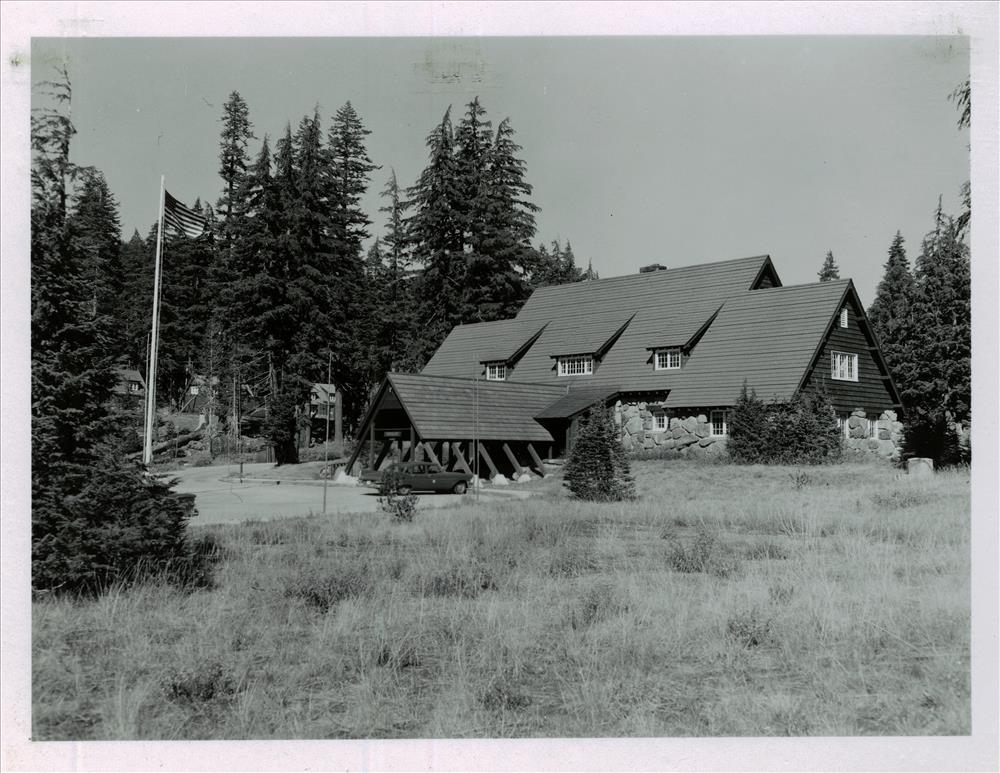I wondered who made it.
The winter staff included a secretary, assistant naturalist, and chief naturalist. So it was a small staff, and then the summer staff was 13 people, including one man who did maintenance work, whatever needed to be done. A lot of the duties were a matter of maintaining continuity because previous naturalists developed a very fine program. It was a matter of maintaining that and adding to it. One thing I added was having a naturalist at the first overlook when people came in from the north to see the lake (6). That had its drawbacks, because it could be cold and unsheltered.
The North House was gone by that time?
I don’t remember just when that was taken out, but it was not at the location where we needed it. There were no sanitary facilities, so we’d have naturalists on for a few hours at a time. I don’t think we ever put anybody there all day. We needed people oriented staff to talk to visitors getting their first view of Crater Lake.
Sort of like what we call the “rover” at Rim Village.
Yes. That would be the sort of thing it was. We tried a few other innovations such as a field trip to Union Peak, which required going through a locked gate at that time. After describing the conditions the people would have to put up with, we never got any takers.
Was it by vehicle or walking?
By vehicle up to the base of Union Peak, then scramble up to the top.
Up the short trail.
Yes. So, that was one that didn’t make it. I think the North Junction was a good idea. We changed some names around, too, which may seem insignificant now, but to make the little visitor center, so called, at Rim Village more inviting to people. While I was there the exhibits at Sinnott Memorial were refurbished. Previous park planners and park naturalists had planned the exhibits for the Watchman, and so while I was there we finished those off as they were developed down at the San Francisco museum lab.
So the Watchman was being used as a museum?
Yes. The exhibits were installed while I was there.


